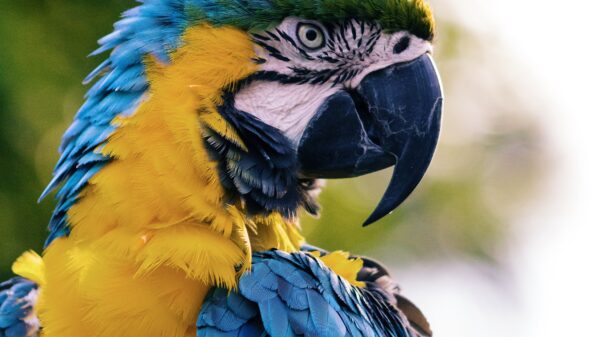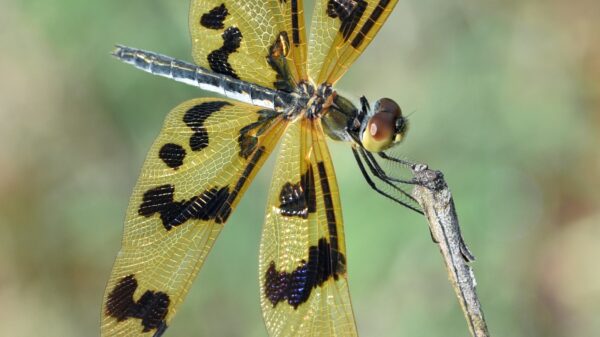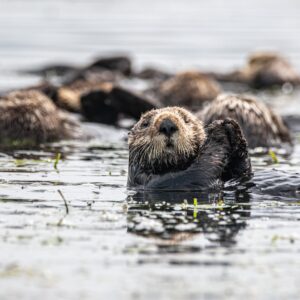
Are you ready to embark on a journey into the world of one of nature’s most captivating creatures? Join us as we unravel the mysteries and secrets of the adorable red panda. These little Red Panda fluff balls may be cute, but don’t let their cuddly appearance fool you – they are fascinating animals with unique behaviors and characteristics that will leave you in awe. Red Panda are cute buddies. In this comprehensive guide, we’ll explore everything from their habitat and diet to their social structures and conservation efforts. So buckle up and get ready for a wild ride as we delve deep into the intriguing world of the red panda!
Introduction to the Red Panda
Red pandas are one of the most elusive and fascinating animals on the planet. They’re also one of the most endangered, with only about 2,500 left in the wild. In this comprehensive guide, we’ll explore everything there is to know about red pandas, from their habitat and diet to their unique physical features and behavioral quirks.
So what exactly is a red panda? Contrary to popular belief, red pandas are not actually related to giant pandas. They’re actually closer in relation to raccoons and weasels. These adorably furry creatures are native to the mountains of Nepal, India, Bhutan, and China, where they live in dense forests at elevations of 5,000-10,000 feet.
Red pandas have long been a source of mystery and fascination. For centuries they were known only through folklore and sightings by Marco Polo and other travelers. It wasn’t until the early 1800s that Western scientists began studying them more closely. Even now, there’s still much we don’t know about these elusive animals.
But what we do know is that red pandas are incredibly special creatures worthy of our protection. So read on to learn more about these amazing animals!
Habitat and Natural Environment of Red Panda
Red pandas are found in the temperate forests of the Himalayas and adjacent mountain ranges in southern China, Myanmar, and Nepal. They inhabit dense forests at elevations of 5,000 to 10,000 feet, where they feed on bamboo shoots and leaves. Red pandas are solitary animals that spend most of their time in trees. They are good climbers and can descend headfirst from tree trunks. When they are not feeding or resting, red pandas travel along the ground on all fours.
Diet and Nutrition
When it comes to the diet and nutrition of red pandas, there are still many mysteries to be unraveled. Scientists have only recently begun to study this elusive creature in earnest, and as such, our understanding of their dietary needs is still quite limited. However, we do know that red pandas are obligate bamboo eaters, meaning that their diet consists primarily of bamboo leaves. In the wild, they can also be seen eating other plants, fruits, and insects on occasion.
In terms of their nutritional needs, red pandas require a high amount of fiber and protein in their diet. This is due to their high metabolism and active lifestyle. They also need a significant amount of fat in their diet to maintain their body temperature in colder climates. For captive red pandas, zookeepers must carefully craft diets that mimic their natural diet as closely as possible in order to ensure their health and well-being.
Health and Wellbeing
The red panda is a fascinating creature that is native to the eastern Himalayas and southwestern China. These adorable animals are often mistaken for pandas, but they are actually more closely related to raccoons. Red pandas are one of the most endangered animals in the world, with only around 10,000 left in the wild.
Despite their small size, red pandas are excellent climbers and can often be seen high up in trees. They are mostly nocturnal creatures, spending their days sleeping in hollow trees or nests made of leaves and branches. Red pandas have very thick fur that keeps them warm in the cold mountain climates where they live. This fur also has a reddish tinge that gives them their name.
Red pandas are herbivores and primarily eat bamboo leaves. However, they will also eat fruit, nuts, and insects if bamboo is not available. Due to habitat loss and fragmentation, red pandas are becoming increasingly reliant on human-provided food sources such as fruits and vegetables.
While they are often considered to be shy and reclusive animals, red pandas can actually be quite playful when they feel comfortable around humans. In captivity, they have even been known to play games like tag and fetch!
Behavior and Socialization
In the wild, red pandas are social animals, living in small family groups or in larger communities of up to 40 individuals. They are shy and elusive creatures, and little is known about their social behavior.
In captivity, red pandas can be very different. They may be quite friendly and outgoing, or they may be aloof and reclusive. It is often hard to predict how a red panda will behave, and each individual animal has its own personality.
Red pandas are generally gentle creatures, but they can become aggressive if they feel threatened. They have sharp claws and teeth, and they are not afraid to use them if they feel threatened or cornered.
Socialization is important for red pandas, both in the wild and in captivity. In the wild, socialization helps them to find mates and to form bonds with other members of their community. In captivity, socialization helps them to adjust to life in close proximity to humans and other animals.
If you are considering adopting a red panda, it is important to remember that each individual animal has its own personality and behaviors. Some red pandas may be outgoing and affectionate, while others may be shy and reclusive. It is important to do your research before you adopt a red panda so that you can choose an animal that will fit well into your home and lifestyle.

Conservation Efforts for Red Panda
Red pandas are an endangered species, with only about 10,000-20,000 left in the wild. Their habitats are threatened by deforestation and they are also hunted for their fur. Conservation efforts are therefore important in order to protect these animals.
One of the main conservation organizations working to protect red pandas is the Red Panda Network (RPN). They work to create awareness about the plight of red pandas and to engage local communities in conservation efforts. RPN also carries out research on red pandas and their habitats, which is used to inform conservation strategies.
Other organizations working to conserve red pandas include the World Wildlife Fund (WWF) and the International Union for Conservation of Nature (IUCN). Both of these organizations are involved in habitat protection and restoration projects, as well as raising awareness about the importance of conserving this species.
Interesting Facts About Red Pandas
Did you know that red pandas are actually more closely related to raccoons than they are to giant pandas? Or that they have extra-long, bushy tails that they use for balance and insulation? Read on to learn more fascinating facts about these incredible creatures!
For starters, did you know that the red panda is not a bear at all? In fact, scientists believe that they’re more closely related to raccoons. They’re also the only known living member of the family Ailuridae, which means “cat-bear.”
These fuzzy creatures are native to the mountains of Nepal, India, Bhutan, and China, and they prefer to live in forests with dense bamboo undergrowth. They’re excellent climbers and often spend time in trees, where they build nests out of twigs and leaves.
Red pandas are relatively small animals, measuring just 20-26 inches long (excluding their tail) and weighing 7-14 pounds. But their tails are extra-long – up to 18 inches! – which helps them balance while climbing and also keeps them warm in cold weather.
These beautiful animals have reddish-brown fur, which is denser and thicker during the winter months. They also have black legs and feet, white markings on their face (which some people say resemble a bandit’s mask), and large furry ears.
All in all, red
Conclusion-Red Panda
In this comprehensive guide, we have explored the fascinating world of red pandas. We have learned about their unique physical characteristics, as well as their complex social hierarchies and behaviors. We have also discussed the threats that these animals face in terms of poaching and habitat destruction. To ensure the survival of these beautiful creatures, it is important to continue educating ourselves on their plight and doing our part to help protect them from further harm. Together, let’s work to unravel all the mysteries of red pandas and conserve them for future generations!







